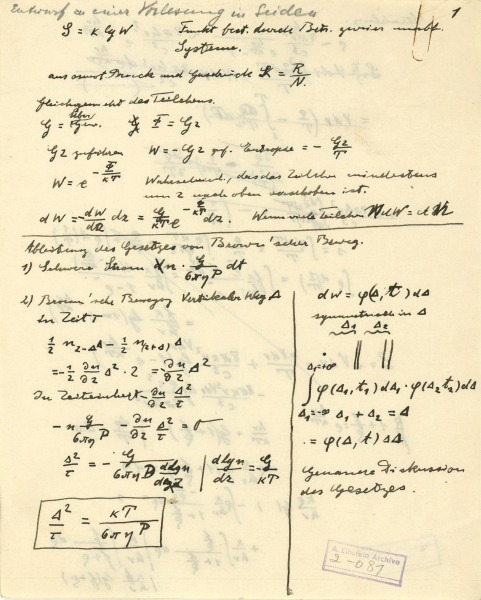Einsteins akademischer Aufstieg
Einstein on Brownian Motion

Notes for a lecture in Leiden, 1911, facsimile
Einstein explains Boltzmann's relation between entropy and probability, S=k lg W, using the example of a particle suspended in a fluid which moves with a certain probability by the distance z from the bottom of a cylindrical container because of atomic thermal motion. He then deduces the law of Brownian Motion from an observation of the amount of the substance diffusing through the cross-sectional unit over a certain time [t]. He subsequently introduces the statistical law of motion of a Brownian particle.
[ Sitemap ]
[ info ] This website was created by the MPI for the History of Science.
 Scene
Scene


 1st Slide
1st Slide
 Branching Point
Branching Point
 Module: Einsteins akademischer Aufstieg
Module: Einsteins akademischer Aufstieg Sequence: 0.0. Start point
Sequence: 0.0. Start point Branching Point: Einstein's Academic Career
Branching Point: Einstein's Academic Career Slide: First Experimental Confirmations
Slide: First Experimental Confirmations Back
Back

